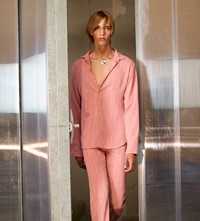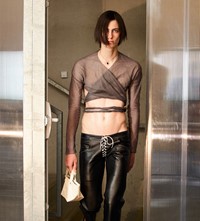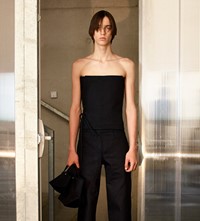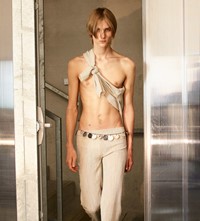The Designer Creating Clothes Infused with Sex and Queerness
- TextHynam Kendall
Sex, gender and the queer experience are all stitched into the fabric of emerging designer Ludovic de Saint Sernin’s clothes
When Ludovic de Saint Sernin was studying womenswear design at the Duperré School of Applied Arts in Paris (after training as a lawyer, at his mother’s insistence), he thought of womens- and menswear as two opposing things. “I actually chose to study womenswear because I thought that’s where the creative possibilities were, I thought that menswear had to be plain and boring, like the general ‘straight guy’ clothes I was wearing to class every day!” says the 27-year-old, LVMH Prize-nominated designer, bookending, as he does throughout our call prior to his S/S19 presentation, with laughter. “Now obviously I understand the relationship between gender and clothes far better, and I think it started with my wardrobe…”
While studying, it was in the chaos of sample sales, where the men’s and women’s garments were thrown together on racks, that de Saint Sernin – who is long and model-proportioned himself – accidently tried on his first womenswear pieces. “That’s when I realised how interchangeable it all actually is!”
After graduating from Duperré, de Saint Sernin interned at Saint Laurent and Dior, before going on to work at the bombastic house of Balmain under Olivier Rousteing, where he was in charge of textile embellishment – “the head of bling,” he jokes. His time there resulted in many fruitful and commercially successful designs, but the house’s aesthetic wasn’t natural to de Saint Sernin, who would come into the atelier in more sombre attire from brands like Loewe. Towards the end, he was “hearing a voice in my head saying, ‘break free’!”

When he started designing his own pieces post-Balmain, freed of the hyper-glam aesthetic it demanded (“fantasy dresses… not for the real world”), de Saint Sernin didn’t anticipate that it would result in a collection, let alone that he would start his own brand. He just wanted to cleanse his palette, so to speak.
Though these pieces started as womenswear (his wealth of experience was in women’s design, but, also, the mannequin in his Parisian apartment was of the body of a woman), he invited a male model he’d discovered on Instagram to come and fit model for him. “The clothes just looked so good on a male body – seeing that idea in real life proved something to me,” he says. What followed was a more gender-fluid approach for de Saint Sernin.
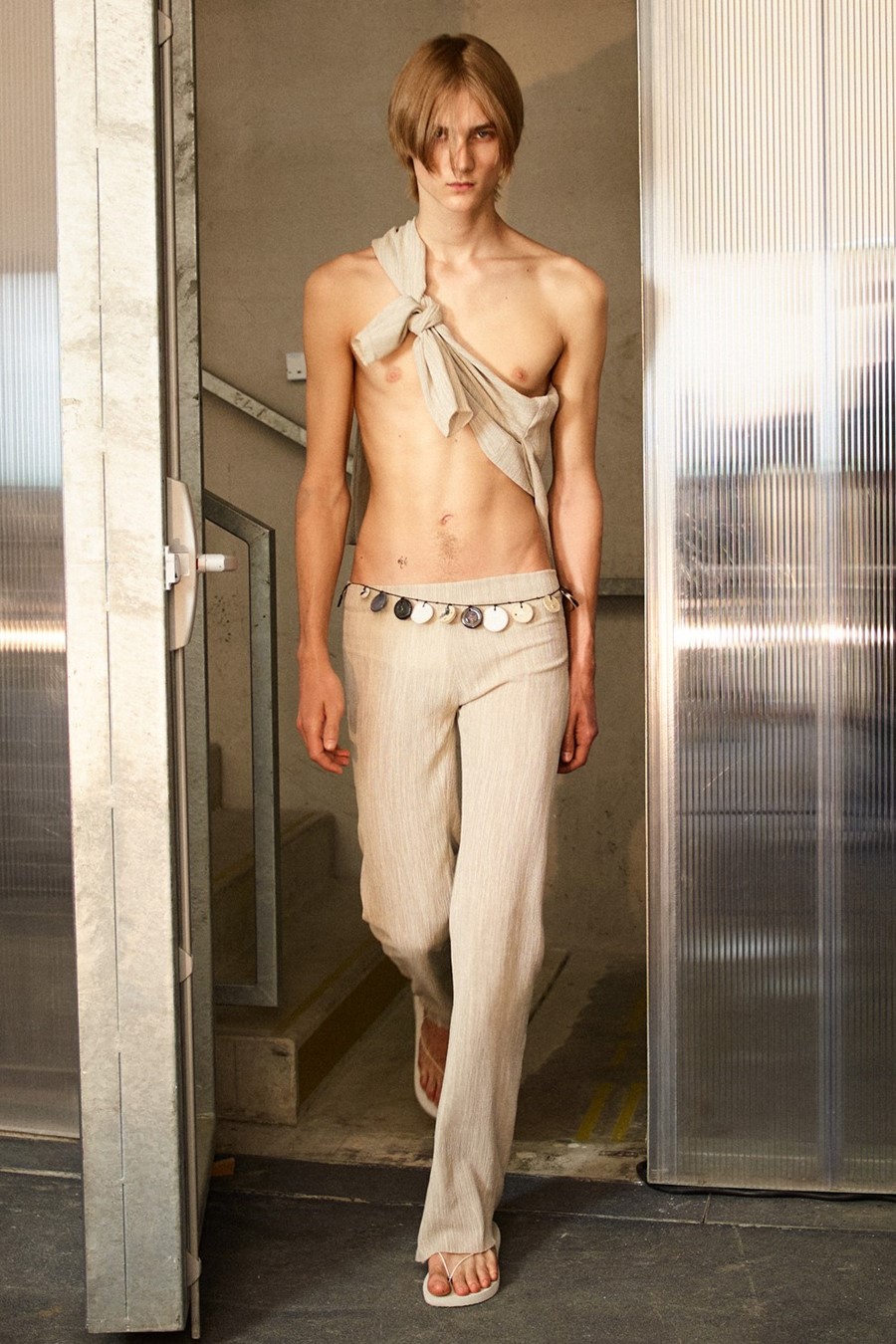
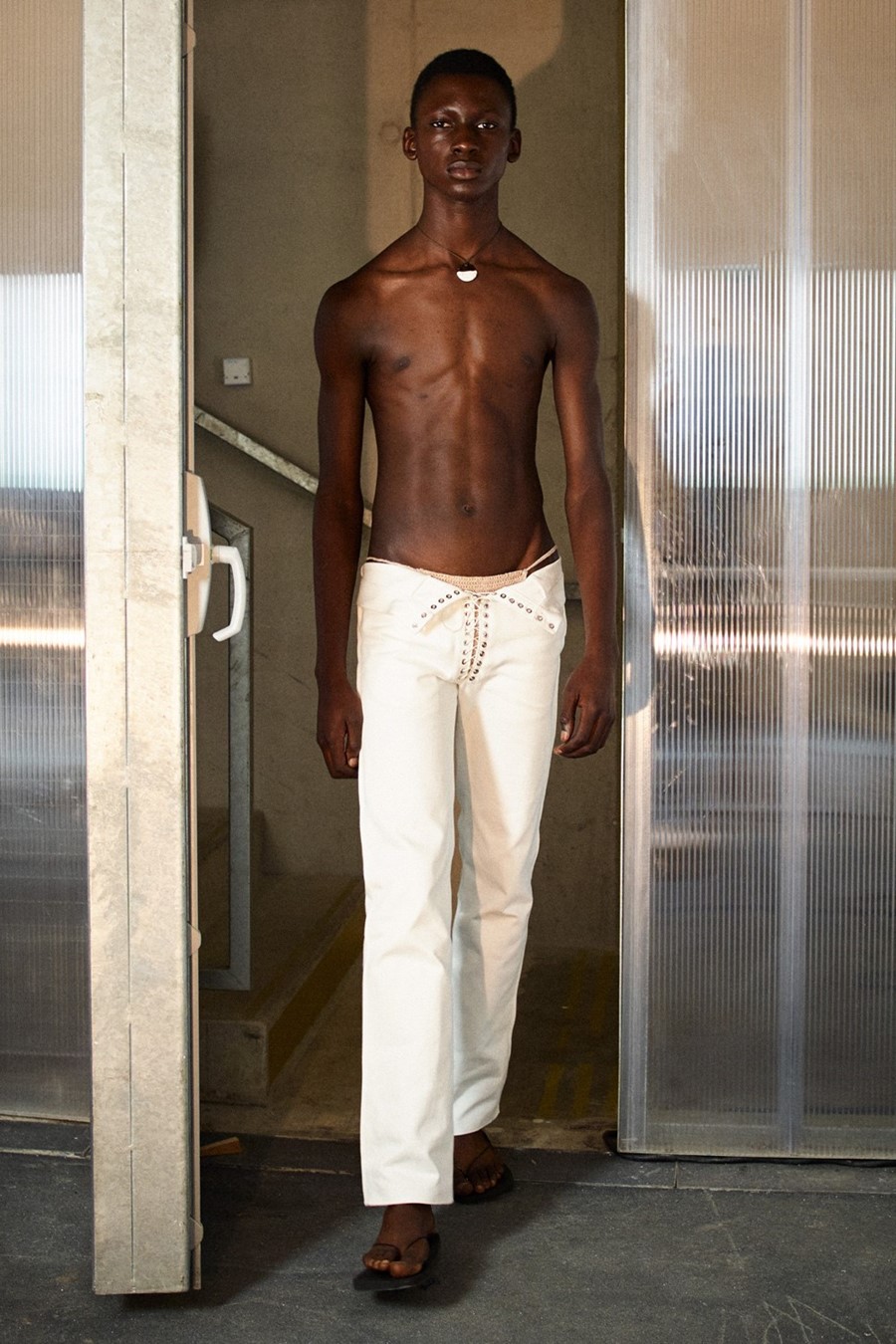
His first presentation, for S/S18, was cast with solely male models; they sauntered the space through sporadic interludes of foliage (“my jungle!”), locking eyes with the opposing eyes of the fellow models. They were, the designer states boldly, “cruising”. “The first presentation was my coming of age and coming out story,” he says. “Essentially, it was autobiographical.” De Saint Sernin had recently come out and used the presentation to celebrate aspects of the queer community he was proud to now be a part of and “still very much learning about”.
His references included the high (Robert Mapplethorpe, who de Saint Sernin had become fascinated with after reading Patti Smith’s New York love letter memoir Just Kids) and the low (the lace flare trousers worn by Christina Aguilera on the cover of her 2002 album Stripped; along with interviews with the Olsen twins about anorexia and with Lindsay Lohan about addiction, which formed the soundtrack). This, de Saint Sernin asides, is one of the great things about the queer cultural landscape – “the queer aesthetic can be both high and low,” he explains, “both are equally loved and relevant.”

Beyond the references, though, the garments inhabit a sense of queerness too. For a start, there’s a lot of fetish: the first two seasons have contained reams of leather – including flasher-style macs fashioned from Hermès seconds’ and trousers which lace up from top to bottom. One pair of Mapplethorpe-worthy lace-up leather underwear from the first collection – “the eyelet briefs” – caused quite a stir in fact. While the garment wasn’t picked up by buyers, it developed a second life thanks to Instagram, going viral in the process. De Saint Sernin did a Valentine’s Day post – “Valentine’s Day Limited Edition Red Leather Eyelet Briefs @ludovicdesaintsernin S/S18 Special” – and the DMs overflowed. “They became their own business!” the designer laughs. “I think they speak to a modern queer customer for sure, there’s that act of vanity in having them – you can use them to indulge yourself. Men were buying them to take mirror selfies of themselves wearing them. They were dangerous and exotic.”
De Saint Sernin’s S/S19 collection – hard to believe it’s only his third – entitled Summertime Sadness, continues the theme of personal and autobiographical narratives. Where the initial presentation was about his coming out, S/S19 recalls the sexual confusion of his youth – trips to the beaches, sharing longing glances with strangers, sexuality and desire not fully formed or understood. It also bears references to both Justin Bieber’s Instagram account and Peter Berlin (the stage name for photographer, artist, filmmaker, clothing designer, model and gay sex symbol Armin Hagen Freiherr von Hoyningen-Huene). Along with the leather looks – “always leather in my collections!” – there is a series of denim separates (all arduously and carefully sourced from Japan), which features a cropped jacket teamed with super low-waisted lace-up jeans.

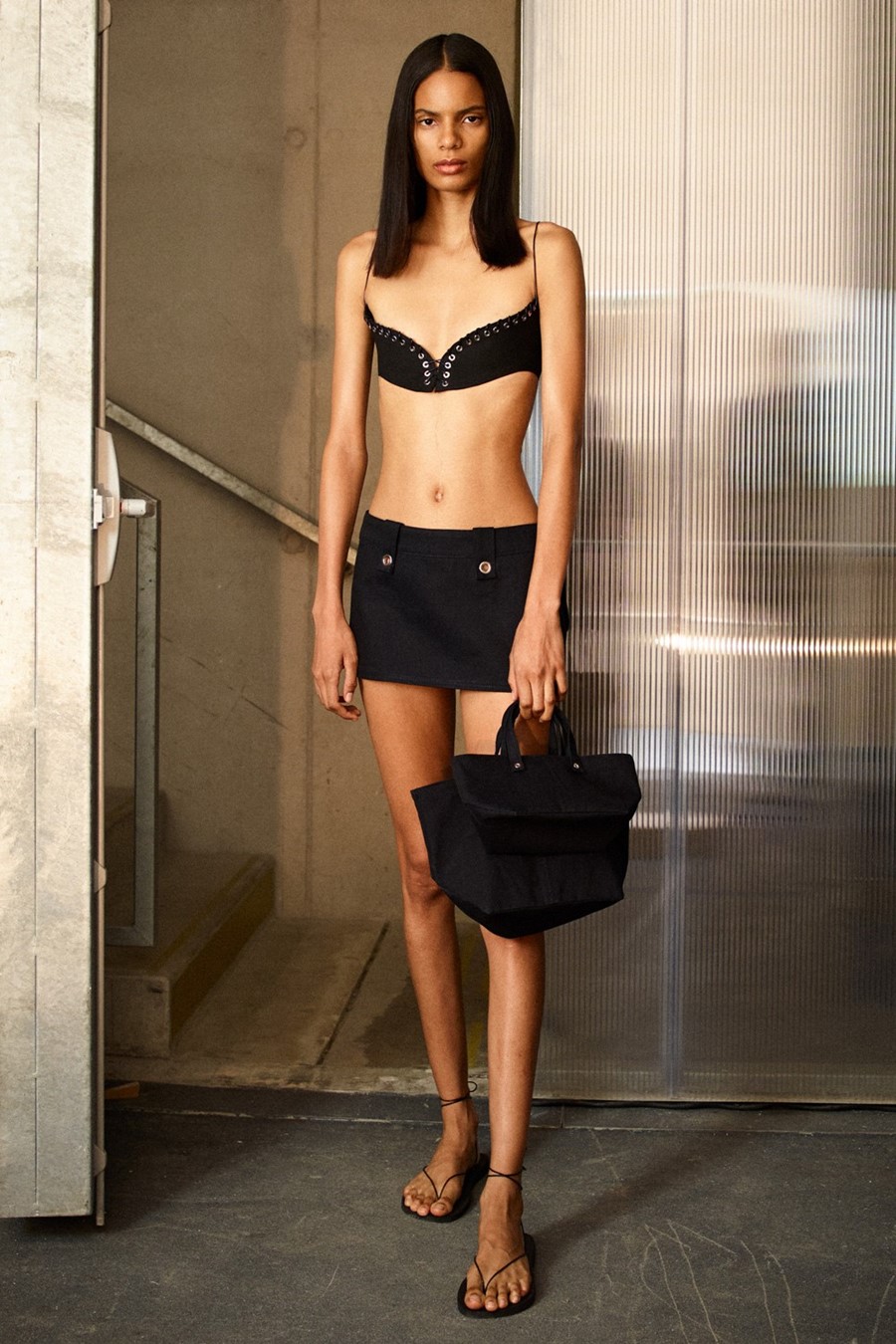
De Saint Sernin has also used this opportunity to launch swimwear. A bralette top made from a deconstructed version of the previously mentioned men’s eyelet briefs is a real showstopper – “those briefs are my legacy!” At the time of writing, he’s not sure whether they’ll be worn by one of the male models or by one of their female counterparts. “It’s not as obvious as placing the ‘female seeming’ looks on the female models, it’s about which feels right for the person when putting it together, it’s more organic than just adhering to preconceived genders,” he says. “The same clothes can be menswear on men, and womenswear on women, it really is that simple!”
Of the three touchstones of the label – sex, queerness and gendering – it was gender that de Saint Sernin expected to have the most trouble explaining. “I didn’t want people to just call it ‘unisex’ in order to understand what I was doing, especially because the term unisex is so unsexy!” he says. In fact, though, it hasn’t been an issue at all. “We’re in an exciting time regarding openness to these issues. From the very first look in the very first collection, the press appreciated that the clothes can be shown on men at the men’s shows and that that doesn’t necessarily mean it’s menswear, that the gendering of clothes doesn’t have to be as binary as that,” de Saint Sernin says. “In fashion today, the identity of the garment lies solely with the wearer.”

